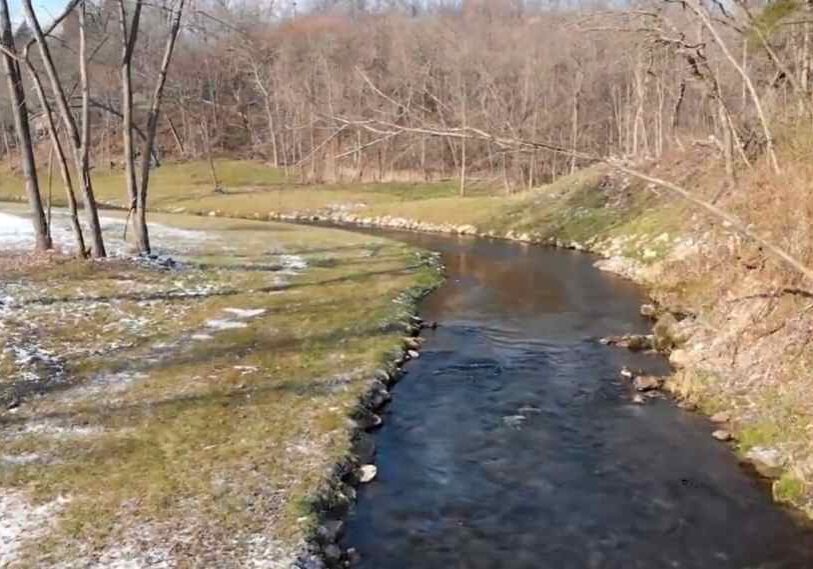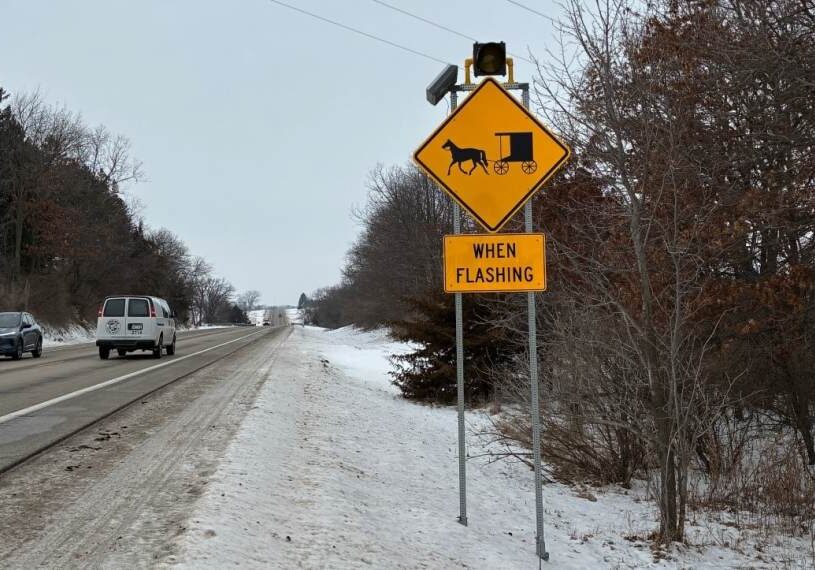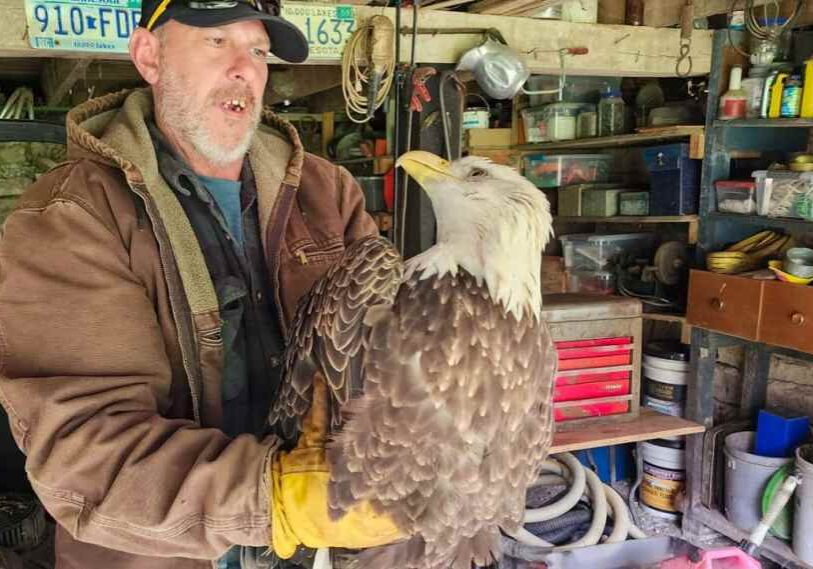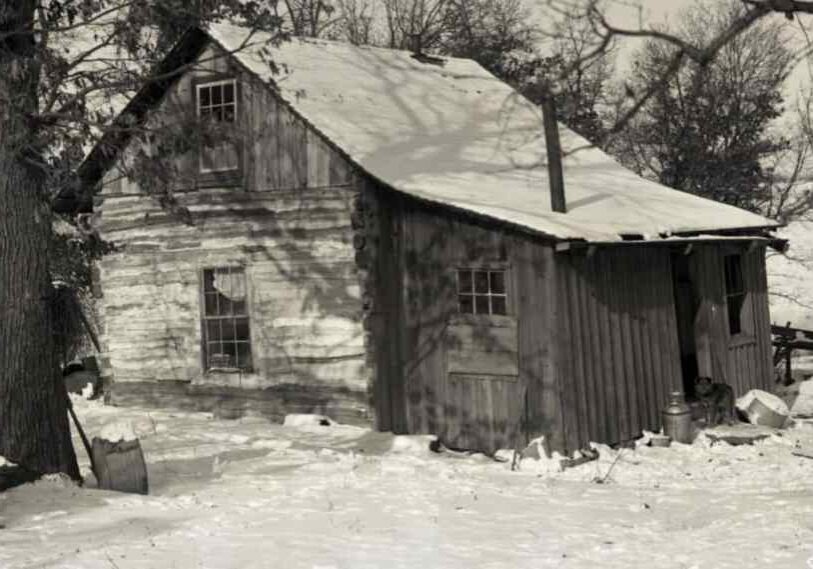You’ve Entered the Driftless Zone

Southeast Minnesota’s past begins on a prehistoric “island” most people don’t know about—it goes way back. Way, way back, before railroads and bike trails, back even further than Native Americans and immigrant trails. To fully discover this place you need to start with that long-ago past…and for many, that happens on their first drive here. Before you even park your car, lick an ice cream cone, or pedal ten feet on the bike trail. It’s right there, if you know where to look, that is.
If you enter on Highway 52-South from Rochester, just out of Chatfield you started seeing tall hills—bluffs, they’re called—on each side of the road. You see similar bluffs when you arrive from the east on Highway 16, southeast Minnesota’s Historic Bluff Country National Scenic Byway (one of three designated Scenic Byways unique to this region). There are so many hills like that around here you often hear this part of Minnesota called “bluff country.”

At Masonic Park in western Fillmore County, near Spring Valley, Minnesota, Kana and Luka Calderon shake off summer’s heat in Deer Creek. A wall of exposed limestone rises behind. (Photo by Eveily Freeman)
Those bluffs are made up mostly of yellowish-gray limestone rock. Early photographs show those cliffs pretty bare. Today they’re densely covered with trees and shrubs. Many of those bluffs are tens of thousands of years old. Some are hundreds of feet high. You’ll see sharp peaks and tall towers. A few even have what look like balancing boulders. It’s not quite Utah’s Arches Natural Park, but still impressive.
Along your drive you might also notice deep hole-like impressions in nearby fields. Some are so large they seem to be swallowing trees. Remember Fountain’s town sign and that claim about “sinkholes?” That’s a clue. More on that in a minute.
What don’t you see? Lakes. Olmsted, Mower and, some claim, Fillmore are among less than a handful of counties in Minnesota without one (in Minnesota, as defined by the MN DNR, but often recognized by lake scientists as 10+ acre natural bodies of water). Other than large ponds, the water around here is moving—rivers, streams, creeks, and springs. (A few of those bubble right out of hillsides). Cold, clear, moving water has benefits. Trout love it (as do the people who fish for them) but mosquitos don’t. No mosquitos? Toto, maybe we’re not in Minnesota anymore.
Well, we are and we aren’t. You’ve arrived in an amazing geological region with a topography unique to Minnesota, the Midwest, even the United States. You have entered (cue Mr. Serling)…the Driftless Zone, a big “island” of nearly 16,000 square miles positioned at the convergence of four U.S. states: Minnesota, Wisconsin, Iowa, and Illinois.
The Midwest’s Driftless Region
Most people have never heard of “the Driftless.” Few can describe it. The name comes from something that didn’t happen here. A million years ago (give or take a millennium) a gigantic ice sheet covered most of what we know as the American Midwest and Canada.
As glacier mountains melted and slid north (the last one about 10,000 years ago) they carved up the landscape, leaving massive holes that formed all those famous Minnesota lakes and deposited enormous piles of “drift”—rocks, sand and gravel—across the land. But glaciers did not cover this region of prehistoric land. No glaciers. No lakes. No covering of drift. Hence, “driftless.” And that changed everything.
Without “drift,” the forces of nature—primarily water and wind over time—were free to do their erosive work on the unprotected limestone, sandstone, and layered shale left behind. Huge torrents of water from melting glaciers surged across the landscape towards what became the Mississippi River basin, carving out the valleys and bluffs that give the “driftless” area its distinctive look.

Visitors to Niagara Cave walk through a natural opening in the limestone where the area’s karst topography channels water to flow after a heavy rain or snowmelt. (Photo by Denise Gaddo)
This unique geology has a related scientific name: “karst.” Karst, also rare, is formed when subterranean soft rock, dissolved by running water, becomes a winding underground network of caves and caverns. Think of Swiss cheese made out of rock.
Karst activity produced thousands of deep caves and caverns around here, including the Niagara Cave in Harmony and the Mystery Cave in Forestville State Park near Preston. Both offer public tours.
Let’s go back to those tree-swallowing holes. In karst topography, some caves are very deep; others lie close to the earth’s surface. When a cave ceiling near the surface collapses it creates an opening called a “sinkhole.” There may be as many as 10,000 sinkholes in Fillmore County alone. New ones are still being discovered.
Over time, trees and shrubs often grow up from the bottom of a sinkhole. No monstrous, Florida-like sinkholes have swallowed local streets or houses—yet. But there are plenty of sinkholes around here. Watch your step.
Early farmers who found sinkholes on their land just plowed around them or used them as dumping pits for old farm equipment and other refuse, a practice that is now illegal. Today, trained sinkhole searchers sometimes find old relics along with an occasional fossil.
Southeast Minnesota is in the “driftless zone.” What does that mean for the people who live here and for its many visitors? Very cool stuff.

John Gaddo peers into a forming sinkhole. A larger, established sinkhole is surrounded by trees in the background. (Photo by Nancy North)
It means there’s amazing geology to explore and appreciate all around this area. It means that on your bike ride you’re looking up at prehistoric limestone bluffs. You can fish in crystal-clear streams that produce some of the best trout in the United States. You can enjoy wildflowers that only grow in a karst environment. You can go “birding” in an area that attracts hundreds of species of migratory birds. It means you can hike into caves to see spring-fed, underground waterfalls. On top of those bluffs you can also take in panoramic views of rolling hills and horizon-stretching farmlands that give “flyover country” a majesty that can take your breath away.
What it all really means is this. If our region didn’t have bike trails to ride, community and professional theater to enjoy, a river to canoe, nice restaurants to eat in, comfy B & B’s to sleep in, or local art galleries to browse, this would still be an amazing place to visit, live and enjoy. And it is. All because you’re in…the Driftless Zone.
Adapted from the book Lanesboro, Minnesota by Steve Harris, published by RiverPlace Press, © 2018 Learn more about southeast Minnesota’s scenic byways: Apple Blossom Drive Scenic Byway, Shooting Star Scenic Byway, Historic Bluff Country National Scenic Byway Discover more about the region’s driftless features at Explore Minnesota; Minnesota DNR’s County Geologic Atlas; or watch the video documentary, “Mysteries of the Driftless”.






